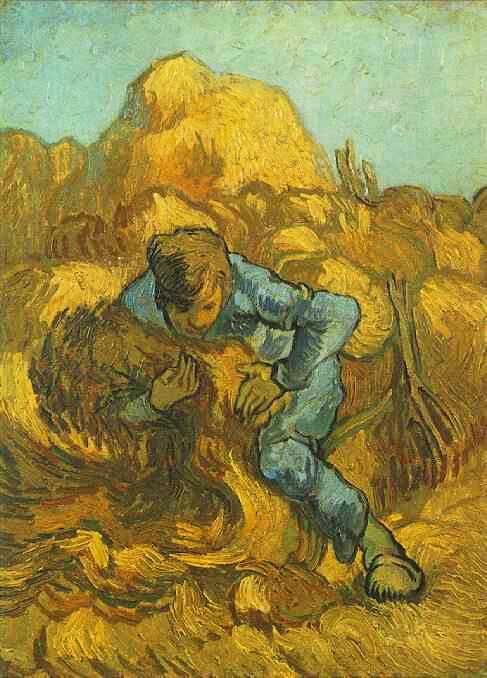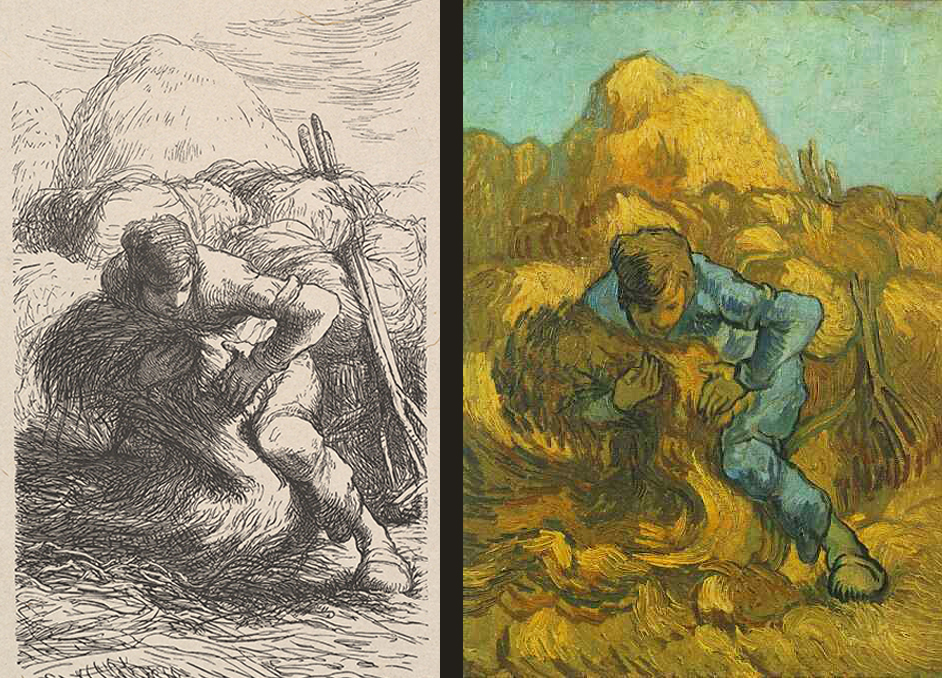January 3: The Results of Generosity
♫ Music:
Friday, January 3
Title: THE RESULTS OF GENEROSITY
Scripture: Malachi 3:10, Luke 6:38
“Bring the whole tithe into the storehouse, that there may be food in my house. Test me in this,” says the Lord Almighty, “and see if I will not throw open the floodgates of heaven and pour out so much blessing that there will not be room enough to store it.”
Give, and it will be given to you. A good measure, pressed down, shaken together and running over, will be poured into your lap. For with the measure you use, it will be measured to you.
Poetry:
Happiness
by Jane Kenyon
There’s just no accounting for happiness,
or the way it turns up like a prodigal
who comes back to the dust at your feet
having squandered a fortune far away.
And how can you not forgive?
You make a feast in honor of what
was lost, and take from its place the finest
garment, which you saved for an occasion
you could not imagine, and you weep night and day
to know that you were not abandoned,
that happiness saved its most extreme form
for you alone.
No, happiness is the uncle you never
knew about, who flies a single-engine plane
onto the grassy landing strip, hitchhikes
into town, and inquires at every door
until he finds you asleep midafternoon
as you so often are during the unmerciful
hours of your despair.
It comes to the monk in his cell.
It comes to the woman sweeping the street
with a birch broom, to the child
whose mother has passed out from drink.
It comes to the lover, to the dog chewing
a sock, to the pusher, to the basketmaker,
and to the clerk stacking cans of carrots
in the night.
It even comes to the boulder
in the perpetual shade of pine barrens,
to rain falling on the open sea,
to the wineglass, weary of holding wine.
THE PROMISE OF ABOUNDING GENEROSITY
We underestimate the generosity of our Lord.
If you’re like me, perhaps it’s not simply a lack of understanding of the significance of what we’ve already been given in Emmanuel. Rather, well-intentioned and rightful warnings against “treating God like Santa Claus” or falling into the “prosperity gospel” can cause dwelling on the idea of a God who gives generously to feel consumerist, greedy, or at the very least, uncomfortable.
Yet while we must certainly never reduce the indescribably precious gift of prayer to a transaction of demands, nor fail to measure well the cost of the Way of the Cross, there is also a truth of which we must not lose sight: Generosity finds its source in God.
The same God who calls us to become living sacrifices is more eager to delight his children than the giddiest parent on Christmas morning. The same God who dwells in unapproachable light God is more jovial and full of mirth than our culturally imagined St. Nick. The Holy One of Israel, the Unblemished Lamb, the Alpha and Omega, the Almighty King, the long-awaited Messiah — the very same Lord brims over with affection for you, relishes your excitement, and cherishes your moments of childlike wonder.
While we know it is better to give than to receive, it is the assurance of our access to his abundance that frees us to walk in radical generosity without fearing lack.
Not simply because we have been given every spiritual blessing, not simply because Christ has taught us what the Kingdom of Heaven is like, not simply because he intercedes for us still at the right hand of the Father. We need not fear because we cannot out-give God. We cannot surpass his generosity.
“Test me in this,” he insists. “See if I will not throw open the floodgates of heaven and pour out so much blessing that there will not be room enough to store it.”
“Give, and it will be given to you. A good measure, pressed down, shaken together and running over, will be poured into your lap.”
It’s easy to disguise fear of scarcity as prudence. It’s difficult to expect a harvest so rich we struggle to bind the sheaves. It’s easy to conflate reaping the fruit of living as God intended with earning God’s favor. It’s difficult to give without letting our left hand know what our right is doing. It’s easy to become self-deceived about the limits of our control. It’s difficult to daily come needy and open-handed to receive the gifts of the One who calls us Beloved.
But take heart. He will supply the grace you need to dare to believe, to dare to respond. He who fed thousands with just a few fish and loaves can multiply your offering. And he who knows intimately the longings of your heart knows also how to give good gifts.
May we live in light of the generosity of our Lord — and so come to know it all the more.
Prayer:
Lord,
Teach us to trust your generosity. Move us to kindness and compassion. Give us courage, wisdom, and grace to love our world the way you do, and to meet the needs you set before us.
Amen
Hannah Williamson
Admissions Marketing Copywriter
University Marketing
Biola University
For more information about the artwork, music, and poetry selected for this day, we have provided resources under the “About” tab located next to the “Devotional” tab.
About the Artwork #1:
The Sheaf-Binder (After Millet)
Vincent Van Gogh
1889
Oil on canvas
44.5 cm x 33.1 cm
Van Gogh Museum, Amsterdam
In his series of paintings about wheat fields, Van Gogh symbolically expresses his deeply felt spiritual beliefs, appreciation of manual laborers, and man’s connection to nature. Drawn to Biblical parables, Van Gogh found wheat fields as metaphors for humanity's cycles of life, as both a celebration of growth and realization of nature's powerful forces. Between 1887 and 1890, while at Saint-Paul asylum in Saint-Rémy-de-Provence, Van Gogh painted 21 copies after French artist Jean-Francois Millet. Rather than replicate, Van Gogh sought to translate the subjects and compositions through his perspective, color, and technique. In this piece, painted after Millet’s work, a field laborer is almost overwhelmed by the bounty of the harvest as he attempts to bind the wheat into sheaves.
About the Artist #1:
Vincent Willem Van Gogh (1853–1890) was a Post-Impressionist painter of Dutch origin whose work, notable for its rough beauty, emotional honesty, and bold color, had a far-reaching influence on 20th-century art. After years of painful anxiety and frequent bouts of mental illness, he died aged 37 from a gunshot wound generally accepted to be self-inflicted. Van Gogh did not begin painting until his late twenties, completing many of his best-known works during the last two years of his life. In just over a decade, he produced more than 2,100 artworks, consisting of 860 oil paintings and more than 1,300 watercolors, drawings, sketches and prints. His work included self-portraits, landscapes, still-lifes, portraits and paintings of cypresses, wheat fields and sunflowers. In March 1886, he moved to Paris and discovered the French Impressionists. When he moved to the south of France, his work grew brighter in color and he developed the unique and highly recognizable style he is known for today. The extent to which his mental health affected his painting has been a subject of much speculation since his death. According to art critic Robert Hughes, “Van Gogh’s late works show an artist at the height of his ability, completely in control and “longing for concision and grace.”
https://www.vangoghgallery.com/misc/biography.html
About Artwork #2:
Sheaf Binder
Jean-Francois Millet
Engraved by Jacques-Adrien Lavieille (French, 1818–1862)
1853
Woodcut on chine collé
13.5 x 7.5 cm
Metropolitan Museum of Art
New York, New York
About Artist #2:
Jean-Francois Millet came from a deeply religious, farming family and saw the peasant-class as nobly fulfilling the words of the Old Testament Book of Genesis 3:19, which read: "In the sweat of thy face shalt thou eat bread, till thou return unto the ground; for out of it wast thou taken: for dust thou art, and unto dust shalt thou return." Millet depicted his peasants in the same manner as earlier movements had depicted more exalted subjects, such as historic and Biblical figures or mythological heroes. As a result, his shepherds and farm laborers occupied large spaces on the canvas. Van Gogh found inspiration in Millet's style and subject matter, being drawn to his images of the rural life of farmers.
https://www.theartstory.org/artist/millet-jean-francois/
About the Music:
“Images, 2e Suite, Op. 31: I. Les enfants a la creche de Noel” from the album Marcel Tournier: Works for Harp
About the Composer:
Marcel Lucien Tournier (1879–1951) was a French harpist, composer, and teacher who composed important solo repertoire for the harp that expanded the technical and harmonic possibilities of the instrument. His works are regularly performed in concert and recorded by professional harpists, and they are often selected for harp-performance competitions. A student of Alphonse Hasselmans at the Paris Conservatory, Tournier won the Second Grand Prize of the Prix de Rome in 1909. He also won the Rossini Prize for Laura et Petrarch. Tournier succeeded his teacher as professor of harp in 1912, holding that position until 1948, and trained two generations of harpists from France, the United States, other European countries, and Japan. Tournier composed several dozen solos for harp, a number of chamber works that prominently feature the harp, and a few works for piano and orchestra. His notable students include American harpist and educator Eileen Malone.
https://en.wikipedia.org/wiki/Marcel_Tournier
About the Performer:
Chantal Mathieu (b 1951) began studying music theory at the age of six at the Conservatoire de Lille and, a year later, she started the piano together with Madame Depatte and the harp with Marie-Astrid Auffray. In 1964 she entered the National Conservatory of Music of Paris (CNSMP) and won first prize in harp at age 14. Her solo and concert career launched in 1970, and she performed and taught in Germany before settling in Switzerland. An avid teacher, Mathieu was hired in 1977 at the Conservatoire de Musique de Lausanne where she taught harp and chamber music for 34 years. Along with her career in education, Chantal Mathieu has a distinguished career as a concert artist and has performed as a soloist with orchestras such as the Berlin Philharmonic, Orchester de la Suisse Romande (OSR), Lausanne Chamber Orchestra (OCL), and Seiji Osawa Mito Chamber Orchestra.
https://www.bach-cantatas.com/Bio/Mathieu-Chantal.htm
About the Poet:
New Hampshire's poet laureate at the time of her untimely death at age forty-seven, Jane Kenyon (1947-1995) was noted for verse that probed the inner psyche, particularly with regard to her own battle against the depression that lasted throughout much of her adult life. Writing for the last two decades of her life at her farm in northern New England, Kenyon is also remembered for her stoic portraits of domestic and rural life. Essayist Gary Roberts noted in Contemporary Women Poets, that her poetry was "acutely faithful to the familiarities and mysteries of home life, and it is distinguished by intense calmness in the face of routine disappointments and tragedies."
https://www.poetryfoundation.org/poets/jane-kenyon
About the Devotion Writer:
Hannah Williamson
Admissions Marketing Copywriter
University Marketing
Biola University
Hannah Williamson ('18) is an alumna of Biola University and the Torrey Honors Institute. She is currently employed as Biola's Admissions Marketing Copywriter and cares deeply about using language to connect, reconcile, and influence people.


